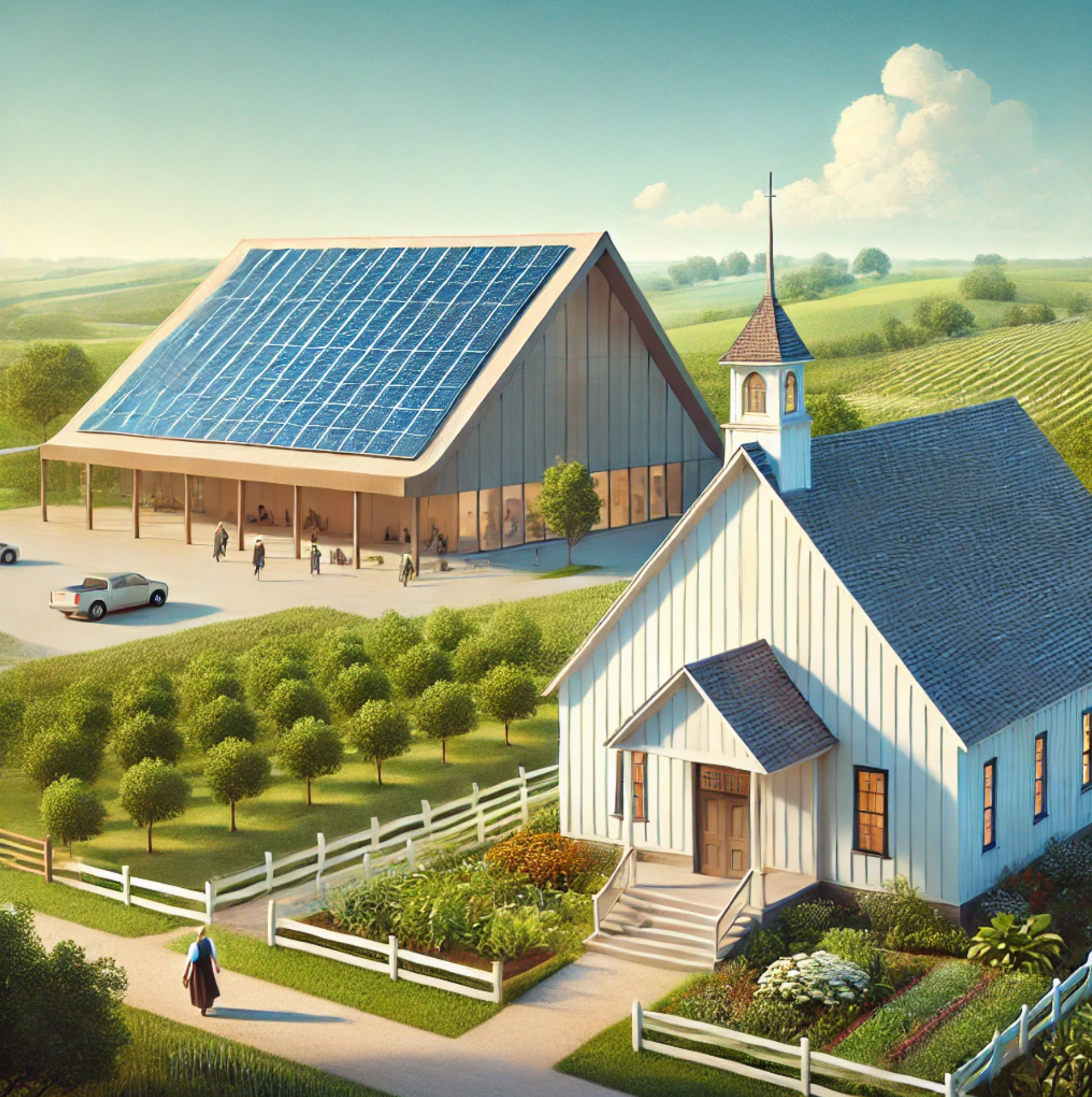
Mennonite Architecture: Simple Beauty and Practical Design
Introduction
Mennonite
communities are renowned not only for their rich cultural heritage and peaceful
way of life but also for their distinctive architectural style. Mennonite architecture,
characterized by simplicity, functionality, and a deep connection to the land,
offers a unique glimpse into the values and lifestyle of this community. This
article explores the key features of Mennonite architecture and highlights some
notable examples that visitors can appreciate.

Simplicity
and Functionality
Mennonite
architecture embodies the principles of simplicity and functionality. The
design of Mennonite homes and buildings reflects their commitment to
practicality and modesty, avoiding unnecessary ornamentation and extravagance.
This architectural style emphasizes clean lines, sturdy construction, and
efficient use of space, ensuring that each structure serves its intended
purpose effectively.
Connection
to the Land
A strong
connection to the land is a hallmark of Mennonite architecture. Buildings are
often constructed using locally sourced materials, blending seamlessly with the
natural surroundings. This approach not only fosters sustainability but also
creates a harmonious relationship between the built environment and the
landscape. Mennonite farms, barns, and houses are designed to withstand the
elements and support agricultural activities, highlighting the community’s
agricultural roots.
Notable
Examples
Old Order
Mennonite Farms: Scattered across rural Ontario, these farms are quintessential
examples of Mennonite architecture. Visitors can observe the traditional barns,
farmhouses, and outbuildings that have been maintained for generations. These
structures, often painted in muted colors, exemplify the Mennonite emphasis on
durability and utility.
Meetinghouses:
Mennonite meetinghouses, where the community gathers for worship, are simple
yet elegant structures. These buildings typically feature plain facades, large
windows for natural light, and open interiors designed to accommodate communal
gatherings. The lack of elaborate decorations reflects the Mennonite focus on
humility and spiritual devotion.
St. Jacobs
Mennonite Church: Located in the heart of St. Jacobs, this church is a prime
example of contemporary Mennonite architecture. While maintaining the
traditional values of simplicity and functionality, the church incorporates
modern design elements and materials. It serves as a bridge between the past
and the present, showcasing the evolution of Mennonite architectural practices.
Preservation
and Adaptation
While
Mennonite architecture remains rooted in tradition, there is also a recognition
of the need to adapt to modern times. Newer buildings may incorporate
contemporary materials and technologies while still adhering to the core
principles of simplicity and functionality. This balance between preservation
and innovation ensures that Mennonite architectural heritage continues to
thrive in a changing world.
Conclusion
Mennonite
architecture offers a fascinating window into the values and lifestyle of the
Mennonite community. By prioritizing simplicity, functionality, and a
connection to the land, Mennonite buildings stand as enduring symbols of their
cultural identity. Whether visiting historic farms, meetinghouses, or modern
structures, one can appreciate the unique beauty and practicality of Mennonite
design.
For those
interested in exploring Mennonite architecture firsthand, a visit to the St.
Jacobs region provides ample opportunities. Take a guided tour, attend a local
event, or simply wander through the countryside to experience the timeless
charm of Mennonite buildings.
While in the
area, don't miss out on the offerings at The Mennonite Story interpretive
center. They provide a range of engaging products and experiences:
Guided
Country Tours:
Embark on a scenic ride through the beautiful farming landscape of Woolwich
Township, visiting key Mennonite sites.
Private
Countryside "Back Roads" Bus Tour: Get an exclusive look into Mennonite life with a
knowledgeable guide.
School
Group Tours: Perfect
for immersive learning experiences for students.
Train and
Wagon Tours: Combine
the charm of a train ride with the rustic experience of a wagon tour, complete
with lunch options.
These
experiences provide a deeper understanding of Mennonite culture and history,
complementing the architectural exploration perfectly. For more information, book a tour, and visit The Mennonite Story.
57 Comment(s)
1
1
1
1
1
1
1
1
1
1
1
1
1
1
1
1
1
1
1
1
1
1
1
1
1
1
1
1
1
1
1
1
1
1
1
1
1
1
1
1
1
1
1
1
1
1
1
1
1
1
1
1
1
1
1
1
1
1
1
1
1
1
1
1
1
1
1
1
1
1
1
1
1
1
1
1
1
1
1
1
1
1
1
1
1
1
1
1
1
1
1
1
1
1
1
1
1
1
1
1
1
1
1
1
1
1
1
1
1
1
1
1
1
1
1
1
1
1
1
1
1
1
1
1
1
1
1
1
1
1
1
1
1
1
1
1
1
1
1
1
1
1
1
1
1
1
1
1
1
1
1
1
1
1
1
1
1
1
1
1
1
1
1
1
1
1
1
1
1
1
1
1
1
1
1
1
1
1
1
1
1
1
1
1
1
1
1
1
1
1
1
1
1
1
1
1
1
1
1
1
1
1
1
1
1
1
1
1
1
1
1
1
1
1
1
1
1
1
1
1
1
1
1
1
1
1
1
1
1
1
1
1
1
1
1
1
1
1
1
1
1
1
1
1
1
1
1
1
1
1
1
1
1
1
1
1
1
1
1
1
1
1
1
1
1
1
1
1
1
1
1
1
1
1
1
1
1
1
1
1
1
1
1
1
1
1
1
1
1
1
1
1
1
1
1
1
1
1
1
1
1
1
1
1
1
1
1
1
1
1
1
1
1
1
1
1
1
1
1
1
1
1
1
1
1
1
1
1
1
1
1
1
1
1
1
1
1
1
1
1
1
1
1
1
1
1
1
1
1
1
1
1
1
1
1
1
1
1
1
1
1
1
1
1
1
1
1
1
1
1
1
1
1
1
1
1
1
1
1
1
1
1
1
1
1
1
1
1
1
1
1
1
1
1
1
1
1
1
1
1
1
1
1
1
1
1
1
1
1
1
1
1
1
1
1
1
1
1
1
1
1
1
1
1
1
1
1
1
1
1
1
1
1
1
1
1
1
1
1
1
1
1
1
1
1
1
1
1
1
1
1
1
1
1
1
1
1
1
1
1
1
1
1
1
1
1
1
1
1
1
1
1
1
1
1
1
1
1
1
1
1
1
1
1
1
1
1
1
1
1
1
1
1
Leave a Comment